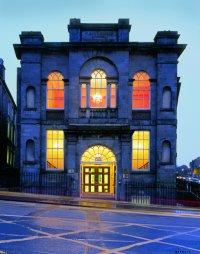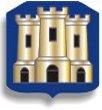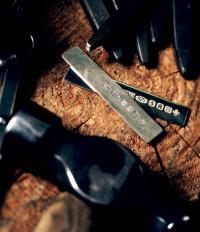|
Think of them as the “signature” of the oldest consumer
protection group in Scotland. For each and every assay mark helps to
assure the “who, what, where and when” of the manufacture of precious
metals.

 There
has been legislation governing hallmarking in Britain since 1300 a
symbol rather than a letter was used because few people could read.
Applying a hallmark to guarantee precious metal purity can be traced
back in Edinburgh to 1457 when the
first surviving Act of Parliament was passed on the subject. Before it
can be sold to the public silver, gold, and platinum must be assayed and
independently hallmarked by one of the four (Edinburgh, London,
Birmingham, and Sheffield) approved UK Assay Offices to guarantee the
quality of the precious metal. Believed to be the oldest continuously
existing business of any kind in Scotland, the Assay Office has been
owned and has operated as an independent, privately funded business
since an unknown date in the mid-15th century by the
Incorporation of Goldsmiths of the City of Edinburgh. There
has been legislation governing hallmarking in Britain since 1300 a
symbol rather than a letter was used because few people could read.
Applying a hallmark to guarantee precious metal purity can be traced
back in Edinburgh to 1457 when the
first surviving Act of Parliament was passed on the subject. Before it
can be sold to the public silver, gold, and platinum must be assayed and
independently hallmarked by one of the four (Edinburgh, London,
Birmingham, and Sheffield) approved UK Assay Offices to guarantee the
quality of the precious metal. Believed to be the oldest continuously
existing business of any kind in Scotland, the Assay Office has been
owned and has operated as an independent, privately funded business
since an unknown date in the mid-15th century by the
Incorporation of Goldsmiths of the City of Edinburgh.
Since
January 1999 UK hallmarks now comprise of a minimum of three compulsory
symbols, though both Hamilton & Inches and Ian Stewart-Hargreaves each
use the traditional five marks to identify their work which is called a
“full convention mark”. These five marks (in order) consist of the
Sponsor’s (or maker’s mark) which is always at least two letters
contained within a shield with no two marks ever being the same. The
next is the Common Control (metal fineness) Mark as established by the
International Convention on Hallmarks (1972) whereby the various levels
of purity for each metal (silver, gold or platinum) is represented by
specific number contained within uniquely shaped shield associated with
said metal. The Lion Rampant is Scotland’s traditional mark for silver
consisting of 92.5% pure silver and 7.5% copper and opinion vary wildly
on its first use from 1457 to 1544, this serves as a duplication of the
925 Convention mark for silver. The ancient three-towered castle
follows and represents the quality, strength and durability of the
nation and of her goldsmiths work in the precious metals. It has been
the hallmark of the Edinburgh Assay Office and been required by
Parliament since 1485. And finally, although since 1999 it is no longer
compulsory, a date letter has indicated the year of manufacture since
1681. Each year has its own letter. Twenty-five of the alphabet's
letters are used in a cycle, with the letter i or j left being left out
alternating. Every 25 years a new cycle is begun with a new style of
either upper or lower case letters sometimes the shields are also
altered. All the silversmiths represented by Thistle & Broom utilise
the letter mark as part of their identification process; by example the
letter ‘e’ signifies 2004; ‘f’, 2005; ‘g’, 2006 and ‘h’ 2007.



To
mark the turn of the century and the return of a Scottish Parliament for
the first time in 300 years, fifteen of Scotland's finest
designer/silversmiths were commissioned to create
The Millennium Collection for Bute
House. Described as the "most exciting collection of contemporary silver
made in Scotland", the collection is on permanent loan to the State and
is used by Scotland’s First Minister and The Scottish Executive when
entertaining visiting Heads of State and VIPs from around the world.
During Parliament recess the collection travels the world providing a
view of the extraordinary range of talent of Scottish silver artisans.
See the silver
craftwork available for sale at Thistle & Broom |

